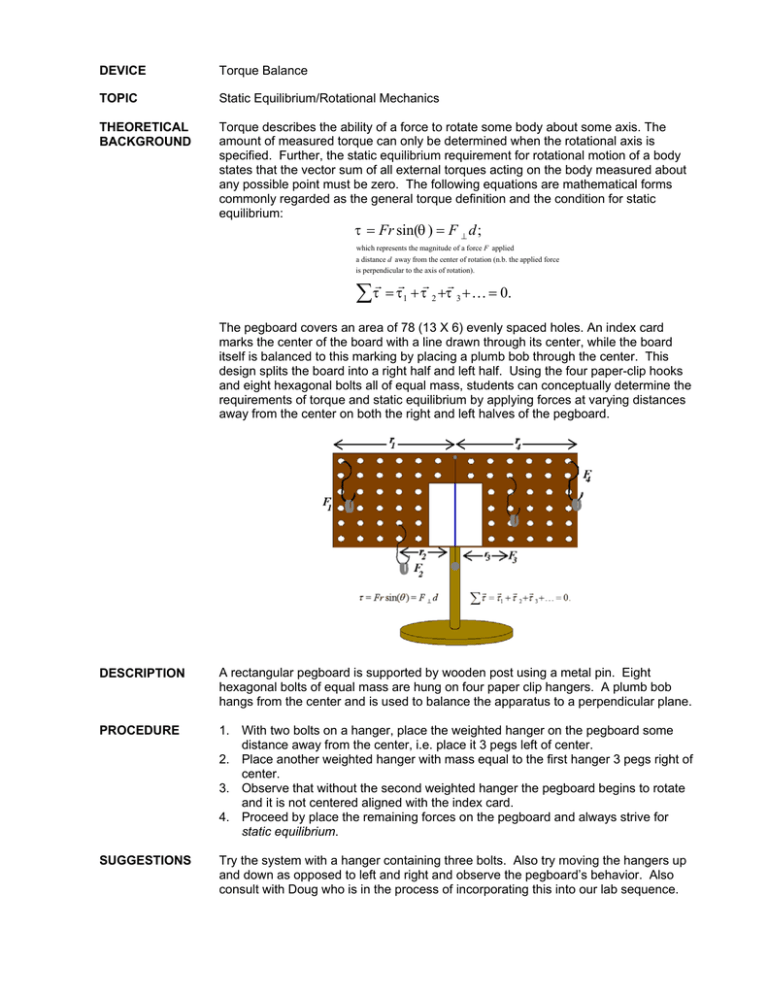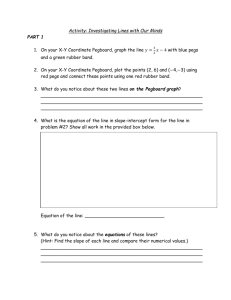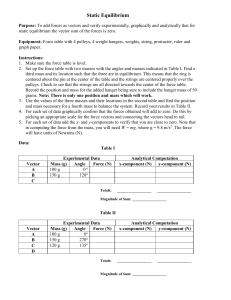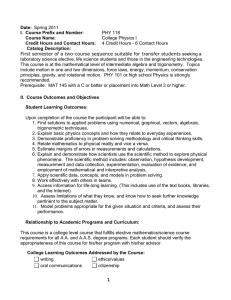DEVICE TOPIC Torque Balance Static Equilibrium/Rotational Mechanics
advertisement

DEVICE Torque Balance TOPIC Static Equilibrium/Rotational Mechanics THEORETICAL BACKGROUND Torque describes the ability of a force to rotate some body about some axis. The amount of measured torque can only be determined when the rotational axis is specified. Further, the static equilibrium requirement for rotational motion of a body states that the vector sum of all external torques acting on the body measured about any possible point must be zero. The following equations are mathematical forms commonly regarded as the general torque definition and the condition for static equilibrium: τ = Fr sin(θ ) = F ⊥ d ; which represents the magnitude of a force F applied a distance d away from the center of rotation (n.b. the applied force is perpendicular to the axis of rotation). ∑τ = τ 1 + τ 2 +τ 3 + … = 0. The pegboard covers an area of 78 (13 X 6) evenly spaced holes. An index card marks the center of the board with a line drawn through its center, while the board itself is balanced to this marking by placing a plumb bob through the center. This design splits the board into a right half and left half. Using the four paper-clip hooks and eight hexagonal bolts all of equal mass, students can conceptually determine the requirements of torque and static equilibrium by applying forces at varying distances away from the center on both the right and left halves of the pegboard. DESCRIPTION A rectangular pegboard is supported by wooden post using a metal pin. Eight hexagonal bolts of equal mass are hung on four paper clip hangers. A plumb bob hangs from the center and is used to balance the apparatus to a perpendicular plane. PROCEDURE 1. With two bolts on a hanger, place the weighted hanger on the pegboard some distance away from the center, i.e. place it 3 pegs left of center. 2. Place another weighted hanger with mass equal to the first hanger 3 pegs right of center. 3. Observe that without the second weighted hanger the pegboard begins to rotate and it is not centered aligned with the index card. 4. Proceed by place the remaining forces on the pegboard and always strive for static equilibrium. SUGGESTIONS Try the system with a hanger containing three bolts. Also try moving the hangers up and down as opposed to left and right and observe the pegboard’s behavior. Also consult with Doug who is in the process of incorporating this into our lab sequence.







